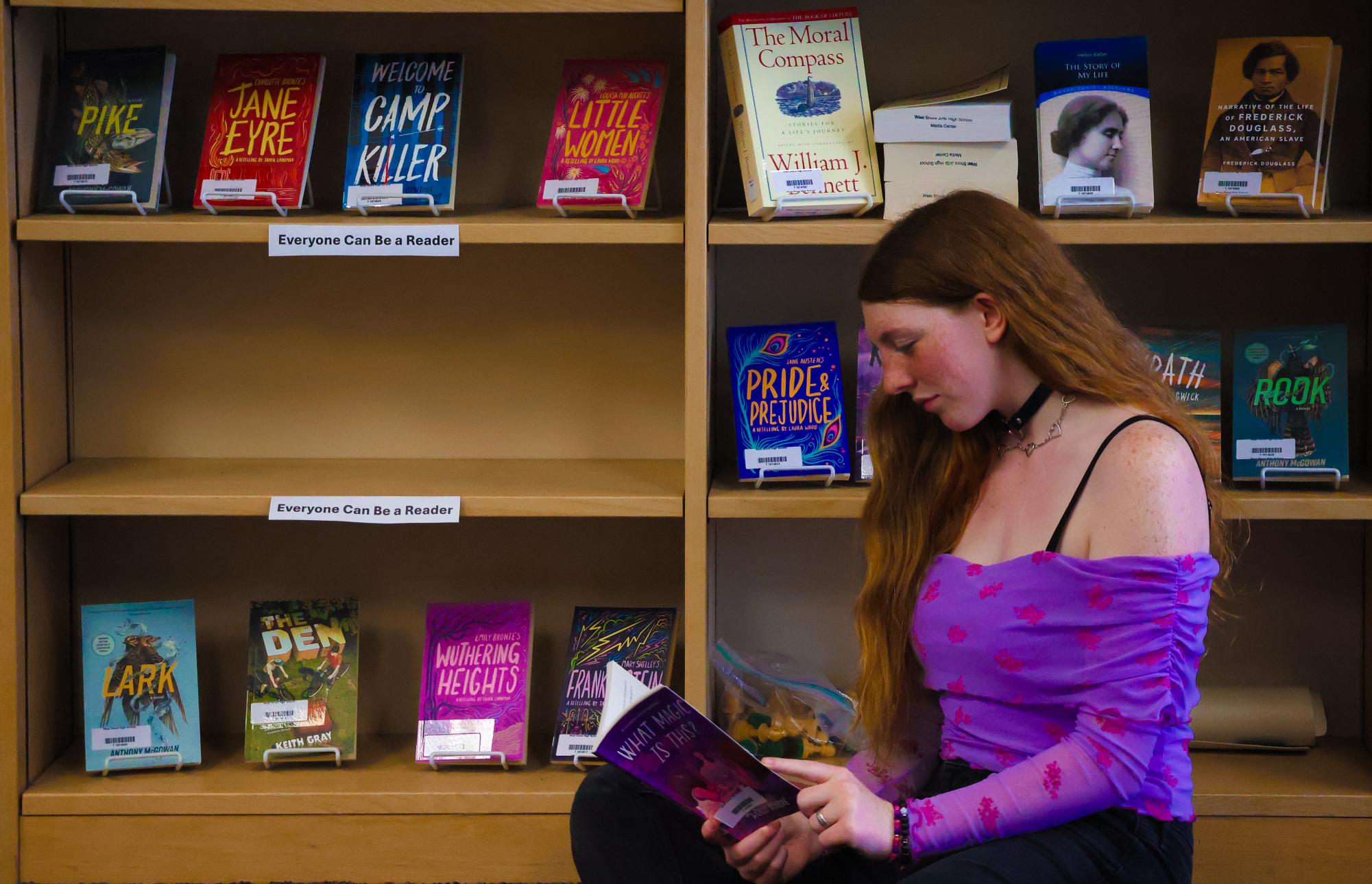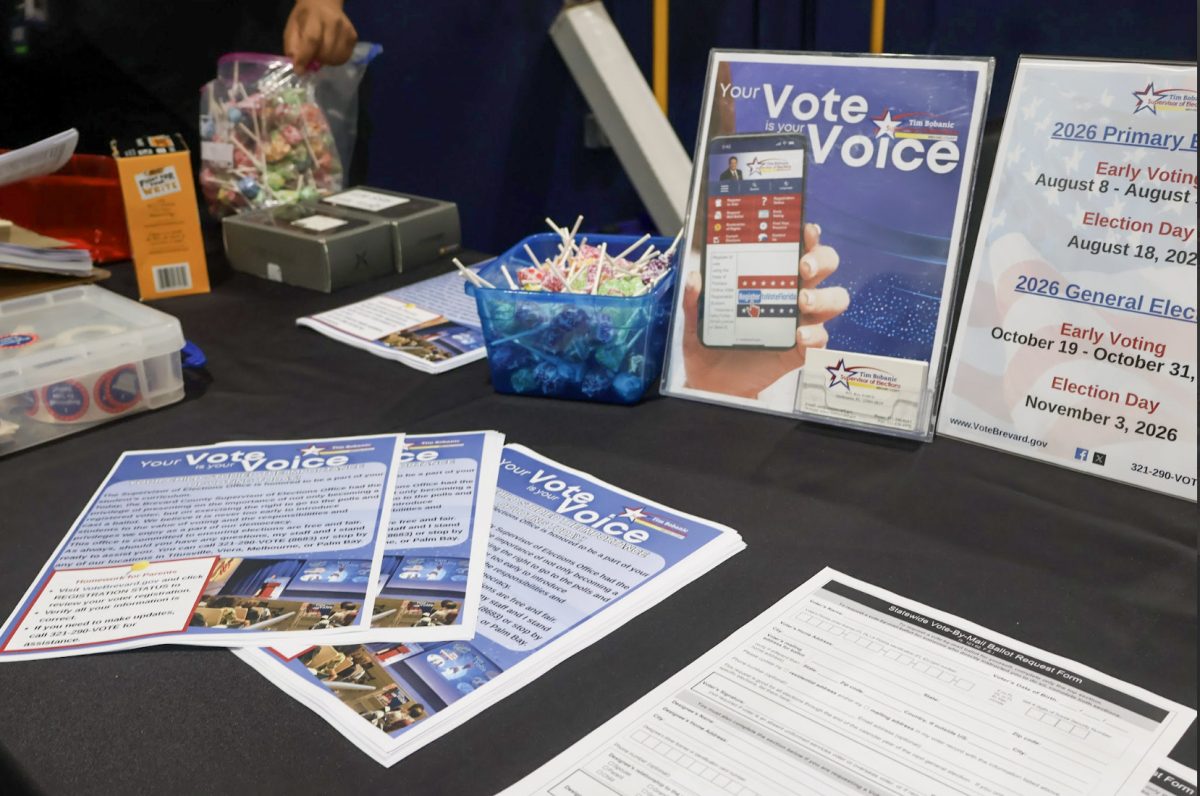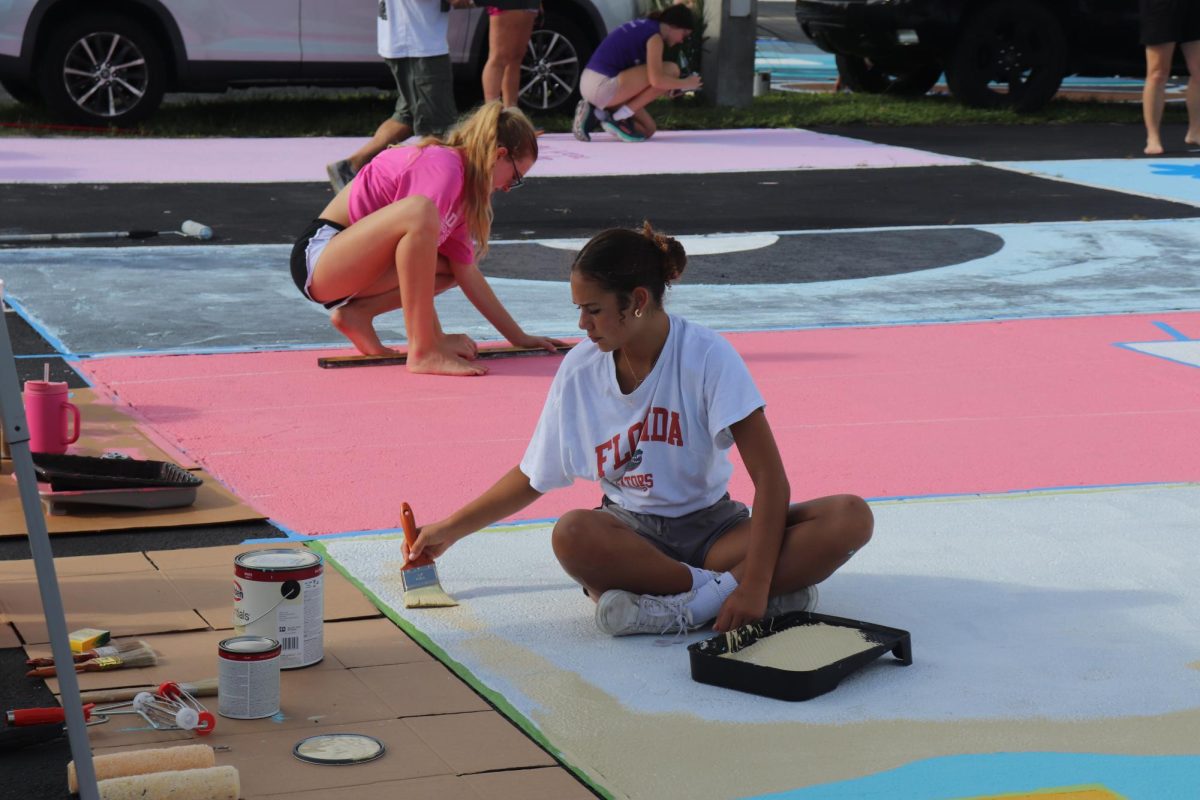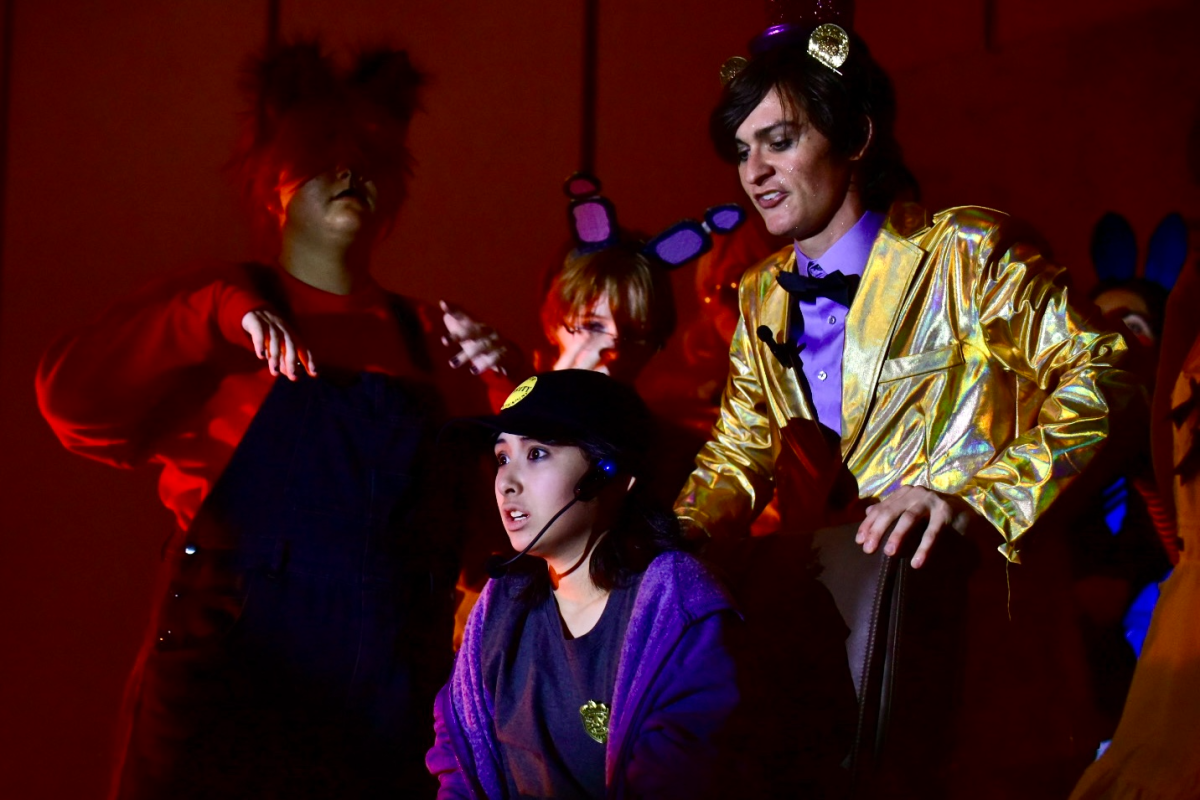Verdana. Arial. Comic Sans. For sophomore Samantha Kervin, who reads about four books a month, fonts like these are a game changer when it comes to her dyslexia.
“Think if the words were to overlap, the letters physically smooshing together to make new letters,” Samantha said. “Try reading another language, like Hebrew. You wouldn’t be able to read that. It’s as if I’m looking at a different language, one that is really, really hard for me to decipher.”
According to the Yale Center for Dyslexia and Creativity, dyslexia is a learning disability marked by reading, writing and spelling difficulties that affects nearly one in five Americans.
Despite encountering these difficulties, Samantha does not let her dyslexia stop her from raising awareness about it. She has spoken over 20 times at school board meetings and posted dozens of videos on social media, which have amassed over four million total views.
While she said she loves reading now, she was not always accustomed to dealing with dyslexia.
“For a long time, I actually hated reading,” Samantha said. “I despised it because I couldn’t really read very well. I’ve been mocked by teachers because of it. I’ve been called illiterate by other kids trying to make fun of me. It’s just tough when you look around at people knowing they can do something, and not being able to understand why you can’t do the same thing. It makes you feel like you’re an idiot, so stupid. And it doesn’t help when people around you are saying the same thing.”
When her mother, Kelly Kervin, noticed Samantha struggled with reading, she took her daughter to several specialists. After she was diagnosed in third grade, Samantha was enrolled in a tutoring program for children with dyslexia. What made the reading lessons different from what she learned in school was that they were based on phonics, which teaches what individual and groups of letters sound like.
Tara Harris, Brevard’s assistant superintendent of curriculum and instruction, said phonics education helps all students, even if they do not have reading disabilities.
“I think that if [students] are learning how to read without phonics instruction, it will show up later in their either elementary career or secondary career,” Harris said. “If I’ve learned to read by using sight words and memorizing, am I really learning to read? What do I do when I get to a word I don’t know?”
The 2023 Florida House Bill 7039 requires all reading instruction to be based on the Science of Reading, a collection of psychology and linguistics research. The bill was passed to ensure that students will not learn to read through sight words and will instead learn through phonics.
“We’re going back to breaking down words, teaching kids the rules of reading,” Kelly said. “[That] sounds like what we should have always been doing, but that’s not actually what our curricula were focusing on. So we’re seeing a push now in kindergarten, first and second, but unfortunately, you have years of students who have been left behind, and the intervention tools that they have access to — quite frankly — aren’t sufficient.”
All Brevard elementary schools have an on-site literacy coach, and many secondary schools have coaches who work part-time or alternate between schools.
“We want to identify students [early] so that we can best intervene,” Harris said. “The literacy coaches receive the most training, and then they are training and working with classroom teachers. The classroom teachers are not yet fully trained in dyslexia identification. If a teacher is not trained in how to identify dyslexia, we have data points [on students’ test scores and reading abilities] that are kind of red flags … that’s when they can start bringing in dyslexic screeners.”
HB 7039 also states that those in kindergarten through third grade who display signs of reading, writing or math disabilities will immediately be informed, screened and given extra resources.
“Every teacher should know what dyslexia is and looks like,” Kelly said. “What I’m finding specifically with teachers is that it’s not a lack of wanting to help, it’s a lack of knowing how to help. And BPS is making its shifts, but unfortunately, it costs a lot of money that we don’t always have.”
Kelly’s brother and husband are both dyslexic and struggled with reading their entire childhoods and parts of their adult life. They did not know they had dyslexia until Samantha was diagnosed.
“I’m college-educated. I went to school. My degree should have covered dyslexia. It didn’t,” Kelly said. “I actually took some education classes as electives, including an [Exceptional Student Education] class, and dyslexia was never touched on. So, what I found with myself was I had preconceived notions of what dyslexia looked like that were based mostly in how I saw it presented in media, and what I found was everything I thought I knew, everything I thought it looked like, it didn’t, which kind of delayed Samantha’s diagnosis of it.”
Samantha credits her improvements in reading to her private tutor, who helped her earn a three on the Florida Standard Assessment, a score that met West Shore’s test score admission requirement. However, not everyone can access the same resources.
“[Accommodations] in elementary [are] not very accessible, which is really upsetting because my mother had to fight for my [Individualized Education Program],” Samantha said. “She had to fight people to have accommodations made for me. Some people do not have that privilege. I had the privilege of good parents who were able to have the time to fight on my behalf when I couldn’t. But some people have two working parents; they don’t have that ability. And it’s sad, but it’s a lot of people’s realities. Bright people didn’t have a fair shot because they didn’t get the help they needed.”
Samantha’s IEP helps “level the playing field.” She can receive class notes in advance and ask teachers to read test questions to her. However, she said she dislikes the attention that comes with it.
“Having to use my accommodations made it feel like everyone was staring at me,” she said. “The thought that ‘oh, she gets questions read to her, lucky you.’ It just made me feel so small. I want teachers to not let that happen. To make sure that everyone knows that this is okay. Don’t say something about it that is harmful and hurtful, because it will stop kids from using [their accommodations], and make kids feel like they can’t use them. I felt like I couldn’t use my IEP because I didn’t want people to look at me like that.”
Samantha said she did not want other children to feel alone in their reading struggles, so she joined her mother at school board meetings to discuss the benefits of dyslexia-friendly curricula.
“While I was telling my story of having dyslexia, trying to explain to them why these programs are needed, [school board member] Gene Trent took a microphone and tried gouging his eye out,” she said. “[He] turned to [school board member] Megan Wright, said something to her, and both started laughing.”
Without a program that accommodates dyslexia, Samantha said that many students struggle.
“That isn’t the first time people have been mocked by the school board, but they did it to a student, which is worse in my opinion,” she said. “It doesn’t matter what school you go to, no matter what there will be somebody with dyslexia. The fact that they didn’t care, and the number of kids that are going to suffer because of that [is] really upsetting.”
Despite estimates of 15-20% of the world’s population having dyslexia, Samantha said there are many frustrating stereotypes about it.
“Dyslexia isn’t a choice,” she said. “Having dyslexia doesn’t mean I’m stupid, and having dyslexia doesn’t give [people] the right to call me an idiot, to call me slow or anything of the sort. That’s what I would love for people to understand, is that I’m not trying to not read. If you know somebody who struggles with reading, and if you know or suspect somebody has dyslexia, help them in any way. Just do something, because they might not be able to do it themselves. They might not even know what it is.”
While she continued speaking at school board meetings, she also turned to posting videos on social media to spread awareness about dyslexia. As of February, her Instagram has 2.1 million views, and her Tiktok has 1.4 million views.
“There was someone who commented saying that they have dyslexia, and so does their kid, and that they wish they had had somebody to look up to like me,” she said. “It was a lot for me, to be honest, because it never really sunk in that [I was] a role model to somebody. It’s a lot to take in that I’m seeing progress happen before my eyes. I’m seeing the fact that me saying something wasn’t a waste of time. It was helpful, actually helpful to somebody. I’m just happy. I regret nothing. Just so happy that something I did was actually able to make a difference.”
In the meantime, Samantha is working on donating dyslexic-friendly books to the school library and working with major book publishers who ask for advice on making their books more accessible. As for the future, she wants to study constitutional law and deal with cases that violate the First Amendment.
She said that, if anything, she hopes “to help people have a voice.”
“If it isn’t going to be me, then who else will?” she said. “You have to be the person to take that leap. That’s kind of what keeps me going. For the longest time, nobody, or very few, have had such a strong voice. I’ve been very loud and very vocal, and I won’t shut up. You just have to take the leap. And that’s what I do, is I take that leap, because if I don’t, what if nobody else does?”







